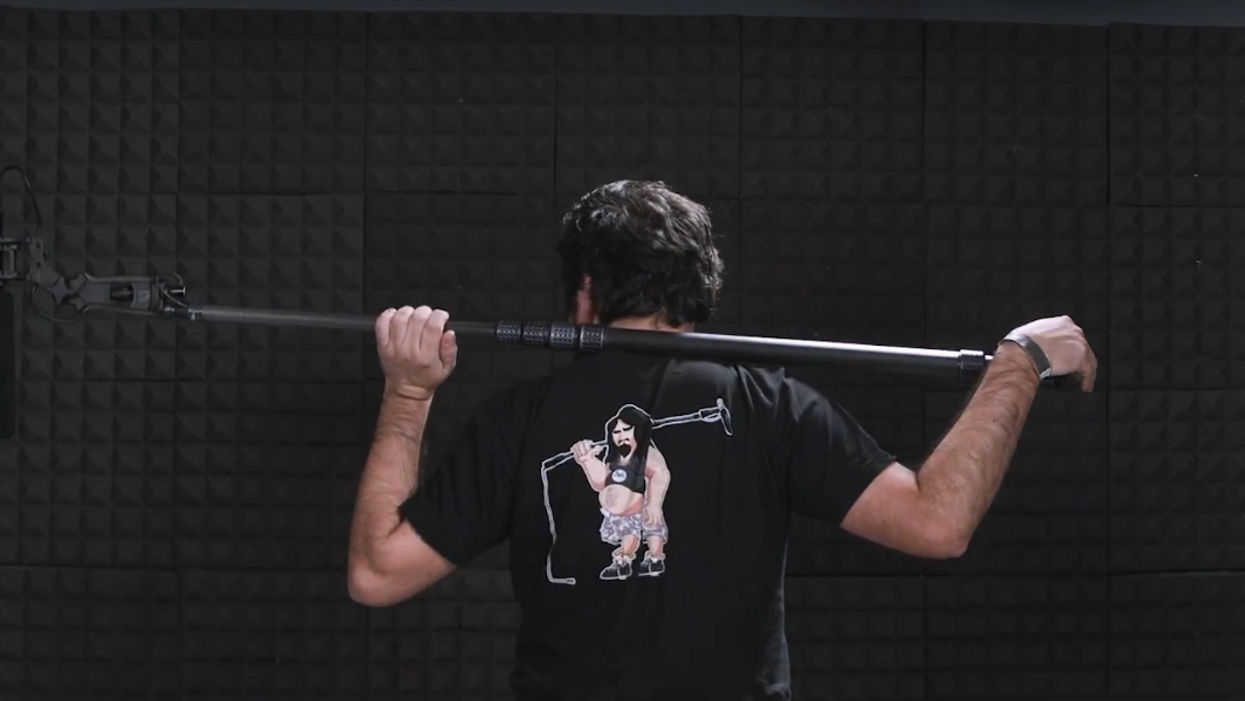6 Boom Pole Positions That You Should Know About
If you're new to operating a boom, here are some essential tips on how to hold them.

Operating a boom may seem like a simple job, but ask any pro that's been carrying one around for a while and they'll say it takes a little bit of finesse, especially when it comes to how to hold one. Operators have to take several things into account, like lighting and fatigue, before deciding on how to hold a boom, and in this video by Aputure, Stephen Harrod shares 6 common ways to hold a boom, including 3 "active" positions in which you're recording sound and 3 "resting" positions in which you're not. Check it out below:
One thing new boom operators tend to find out after their first day on the job is how tiring and uncomfortable holding a boom can be. Even though they're not the heaviest piece of equipment on set, having to carefully hold a boom for hours and precisely point them at the source of audio requires operators to find positions that makes those tasks easier. Here are the positions, both active and resting, that Harrod mentions in the video.
- The "H" position: This is a pretty standard way to hold a boom. It gets the mic close to the subject's mouth and out of the view of the camera.
- Bench press: This position takes the "H" position down to the chest in order to give your arms and back a little bit of a break.
- Scooping: When booming from overhead won't work, like when a light from above casts a boom shadow on your subject, scooping is a great way to get the boom close to your source without casting shadows.
- Shoulder rest: Resting the boom along your shoulders is a comfortable way to give yourself a rest without having to put your gear on the ground.
- Vertical rest: If you hold your boom vertically between takes, just make sure to rest it on your shoe instead of the ground.
- Boom box: This little invention lets you set your boom pole aside without having to lean it up against a wall or lie it on the ground.
What are some other boom positions filmmakers should know about? Leave your comments down below.
Source: Aputure












